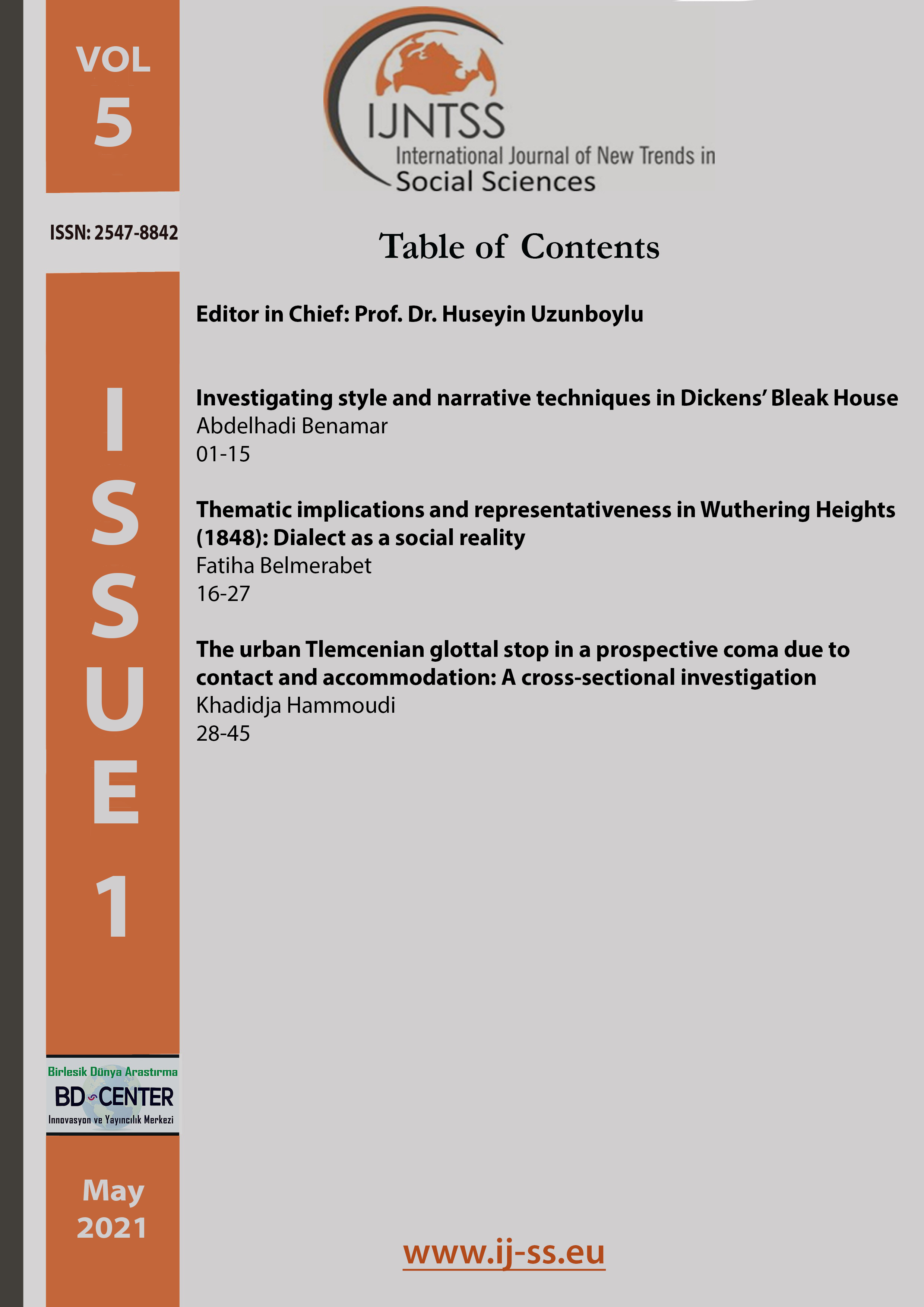Thematic implications and representativeness in Wuthering Heights (1848): Dialect as a social reality
Main Article Content
Abstract
Since language is a brainwork of speakers who live in social and physical environments, researchers are obliged to think about the alliance between the vocabularies’ meaning in dictionaries and their significance in social use. And because the novel is a fictional piece of writing which is primarily inspired by real life and reflects realities. In Wuthering Heights, Emily Bronte strives to interfere in her characters’ thought and considers their social class, culture and experience; she acts as a writer, the speaker and the reader as well. These authorial qualities gave birth to a text combined of two language varieties, the Standard English and the Yorkshire dialect which are tightly interwoven without distorting the unity and the arrangement of the story plot. This paper looks to cover the different social inclinations of E. Bronte’s depiction of dialect in addition to some critical resonances of such representation.
Keywords: Wuthering Heights, dialect representativeness, social reality, thematic implications, language.
Downloads
Article Details

This work is licensed under a Creative Commons Attribution 4.0 International License.
Authors who publish with this journal agree to the following terms:
- Authors retain copyright and grant the journal right of first publication with the work simultaneously licensed under a Creative Commons Attribution License that allows others to share the work with an acknowledgement of the work's authorship and initial publication in this journal.
- Authors are able to enter into separate, additional contractual arrangements for the non-exclusive distribution of the journal's published version of the work (e.g., post it to an institutional repository or publish it in a book), with an acknowledgement of its initial publication in this journal.
- Authors are permitted and encouraged to post their work online (e.g., in institutional repositories or on their website) prior to and during the submission process, as it can lead to productive exchanges, as well as earlier and greater citation of published work (See The Effect of Open Access).
